
How to Choose a Moisture Barrier Bag
Protection Against Moisture, Oxygen, & Contaminants
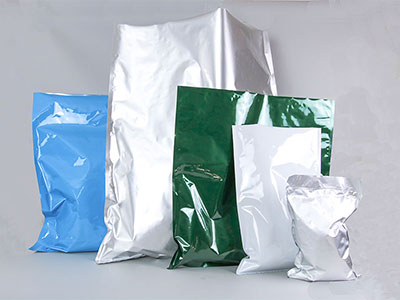
High barrier bags are used to preserve and protect products. They have a low oxygen transmission rate, low moisture vapor transmission rate, and a high tensile strength or puncture resistance. When high barrier packaging is paired with an oxygen absorber or desiccant, products enjoy even greater shelf life and stability. However, selecting the appropriate package is not always as straightforward as it seems.
There are many factors to consider when selecting the most appropriate package. These considerations are based on the product itself as well as the duration and conditions of storage. To confound matters further, there are many products on the market that look similar but have entirely different barrier properties. For this reason, we recommend a call with our experts before placing your order.
Our technical specialists will guide you through the following considerations:
- Material & Thickness
- Proper Sizing
- Special Features
- Your Product’s Unique Requirements
|
|
|
|
Our Most Popular High Barrier Pouch
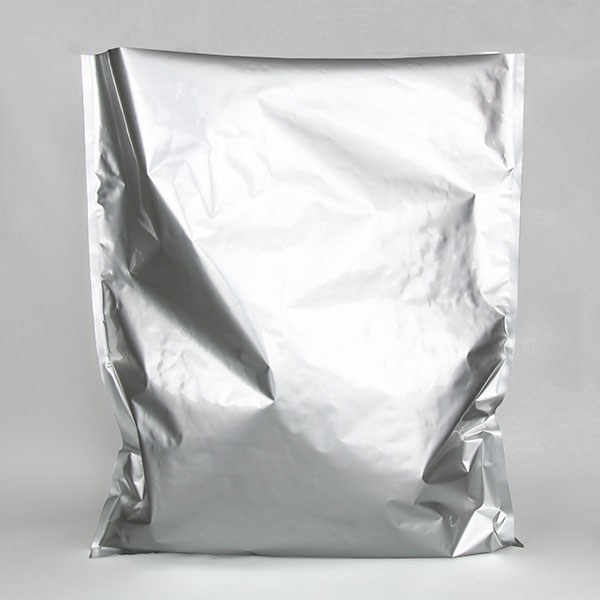
30VF4C36: 30" x 36" PAKVF4C 5.0 mil Mylar Barrier Bag
Our most popular 5.0 mil high-barrier bag for moisture sensitive products. It offers protection against light, oxygen, and moisture, and features an impressive inner sealing layer designed to seal directly through oils and powders. Made from FDA-Approved Food-Grade Material.
50-150 @ $2.75 per bag
200-450 @ $2.65 per bag
500+ @ $2.49 per bag
How Do I Select a High Barrier Aluminum Structure Bag?
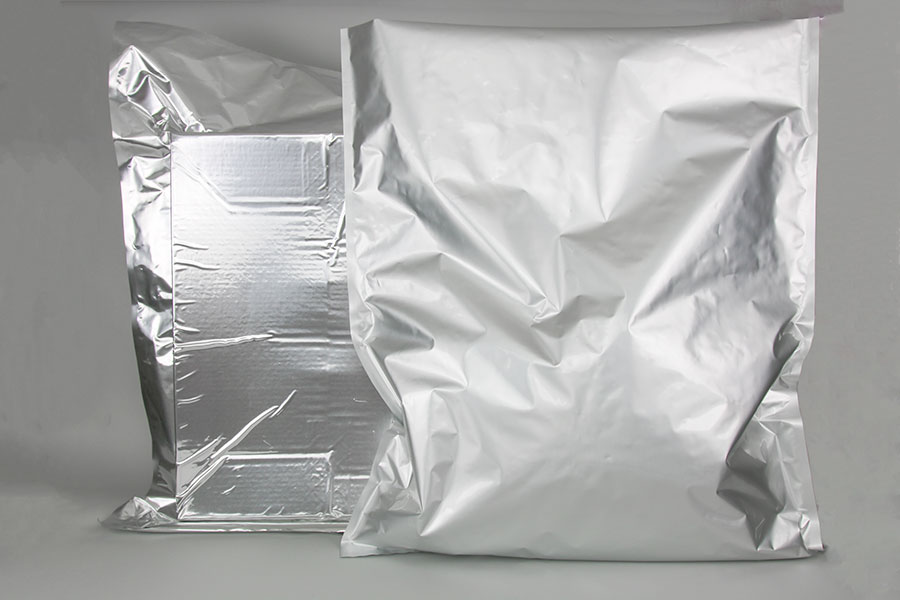
Bags Pictured Above: P/N 30VF4C36, with and without vacuum
How to Select a High Barrier Bag
A lot of misinformation surrounds “high barrier” materials. A proper film barrier that shields products from light, oxygen, and moisture should be completely opaque and multi-layered. Other considerations include the type of material used for the inner layer and the type of seal required.
True MylarFoil vs. Metallized Polyester
Many consumers are informed enough to know that they require a “Mylar foil” material but they confuse this with metallized polyester, a completely different material with none of the same barrier properties as a true Mylar foil. Metallized polyester is the material used on "Mylar" balloons; it is far thinner and shinier than a true foil barrier film. This thin material keeps the balloons lightweight, but is unacceptable as a barrier film. We recommend true MylarFoil, and a thicker film structure. In fact, even our thinnest film, PAKVF2.5M is 75% thicker than the balloon material. Interested in learning about Mylar in layman’s terms? Visit ThoughtCo’s article What is Mylar? or for a more technical description please visit our Mylar Page.
Material Selection, Product Compatibility & Seal Strength
| Material | Clear / Foil | Thickness | MVTR (gr/100in²/24 hrs.) |
OTR (cc/100in²/24 hrs.) |
|---|---|---|---|---|
| PAKPM4AO | Clear | 3.0 mils | 0.303 | 0.032 |
| PAKVF4MCP | Foil | 4.0 mils | 0.0005 | 0.002 |
| PAKVF4PCA | Foil | 4.0 mils | 0.0006 | 0.0006 |
| PAKVF4 | Foil | 4.3 mils | < 0.0005 | 0.001 |
| PAKVF4N | Foil | 4.3 mils | < 0.0003 | 0.001 |
| PAKVF4D | Dull Foil | 4.5 mils | < 0.0005 | 0.001 |
| PAKVF4W | White Foil | 4.5 mils | < 0.0005 | 0.001 |
| PAKVF4C | Foil | 5.0 mils | 0.0006 | 0.0006 |
| PAKVF4K | Kraft Foil | 5.0 mils | 0.0005 | 0.01 |
| PAKVF4NNX | Foil | 5.7 mils | < 0.0003 | |
| PAKVF4PC | Foil | 6.0 mils | 0.0003 | 0.0006 |
| PAKDRY7500 | Foil | 7.5 mils | < 0.0006 | < 0.0005 |
|
|
||||
Typical Applications & Industries
- Fine Powders
- Raw Ingredients
- Dehydrated / Freeze Dried Foods
- Food Supplements
- Pharmaceutical Products
- Excipients & Active Ingredients
- Electronics / Microprocessors
- Fine Art & Antiques Preservation
- Drying Goods
Contact us to determine the appropriate material for your high barrier application.
Material Selection
We offer many film structures to meet the requirements of our customers’ products. These requirements are based on how much oxygen, light, and moisture their product can safely be exposed to. Our technical experts take these factors into consideration, as well as how the product will be stored, when they recommend a film structure. The goal is to select a material with enough of a barrier to properly protect the product, while not overspending on unnecessary films.
Industries that require such packaging range from food and pharmaceutical, to biomedical and electronics. Products include in-process ingredients, pharmaceutical products, dehydrated/freeze dried food products, and many other items which may be sensitive to moisture, or subject to oxidation. Our technical background and experience with a breadth of industries makes us uniquely capable of advising our customers on their packaging selection.
Our technical specialists can advise you on packaging products such as aggressive chemicals, flammable compounds, powder products, oily substances, light-sensitive products, in-process ingredients, moisture-sensitive electrical components, acidic food and beauty products, freeze dried foods, raw goods, and finished food products.
Product Compatibility
Material selection should be based on the product to be packaged. For example, aggressive chemicals and fine powders both have very specific requirements for the inner layer of the pouch. Chemicals, and even natural ingredients such as lemon, contain agents that can react with different films. In addition to establishing material/product compatibility, the ability to seal through the product must also be confirmed. Certain products leave a residue that presents challenges in heat sealing. Such products include fine powders and oily products. For such items we recommend a film with an advanced inner layer capable of sealing straight through substances/residues.
Seal Strength
It is imperative that the barrier pouch receive a solid seal. We recommend using one of our heat sealers which range from small tabletop units to large free standing units, and even specialty units capable of sealing uncoated Tyvek and other challenging materials. Custom or "contour" seal designs are also an option. Many industries have strict regulations regarding documented seal settings with consistent and measurable time, temperature, and pressure readings for each seal. These “validatable” sealers are produced by IMPAK Corporation and work in conjunction with many of the pouches we produce.
Other High Barrier Pouches

Our standard "Large" Mylar Foil bags range from 18" x 23" to 54" x 48". Custom sizes of non-standard dimensions are often produced from specific materials such as our ultra-high barrier PAKVF4PC and represent more than 50% of all production. IMPAK also produces many large Mylar Foil ZipSeal bags. Standard inventory sizes are 3.4" x 4.0" up to 18.0" x 28" in a foil moisture barrier structure and 26" x 36" in a clear barrier structure.
See more of our popular Large High Barrier Pouches here.
How Do I Select a Desiccant?
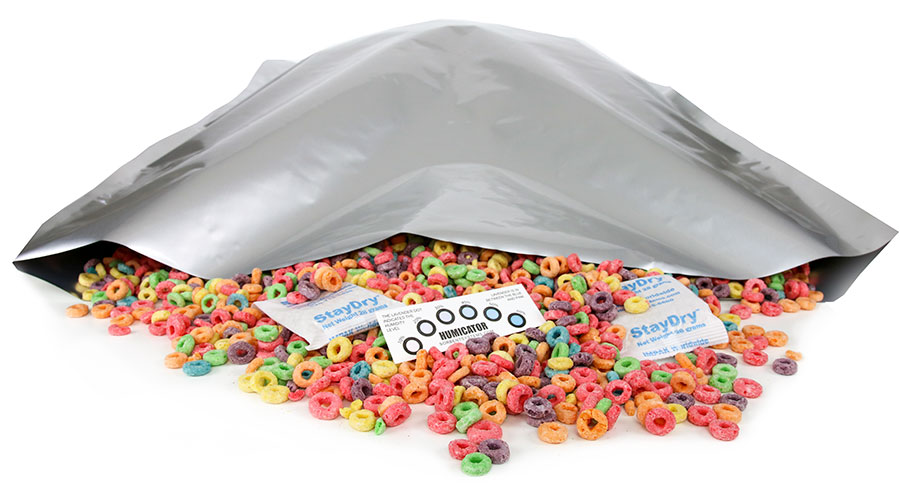
Desiccant selection is based on the volume of the package and the maximum relative humidity you want your product to see. Our packaging experts can aid in the process of selecting the appropriate type and size of desiccant.
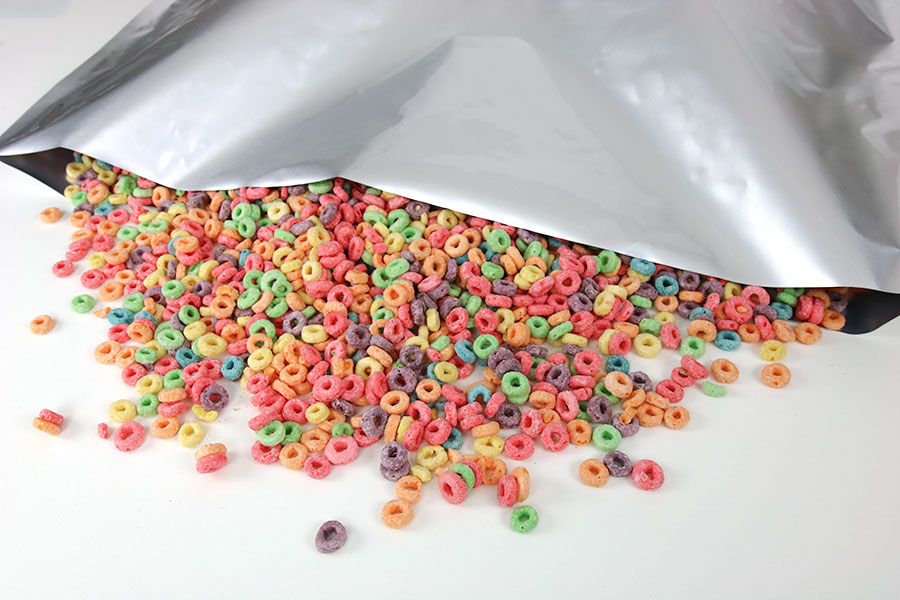
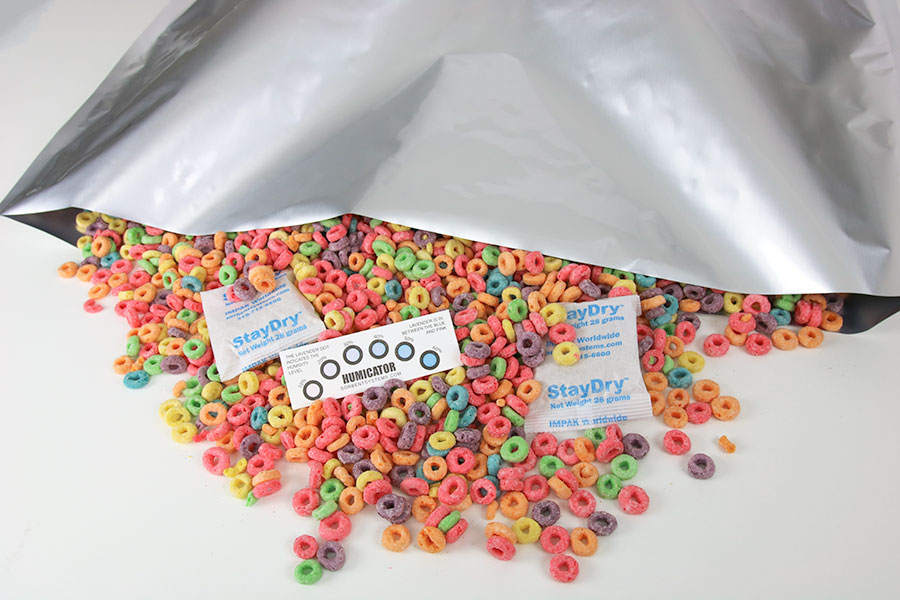

Pictured above: In-house test conducted to show freeze-dried food processors a system to determine the desiccant requirement to maintain a humidity of less than 10%, using fruit cereal as a sample.
